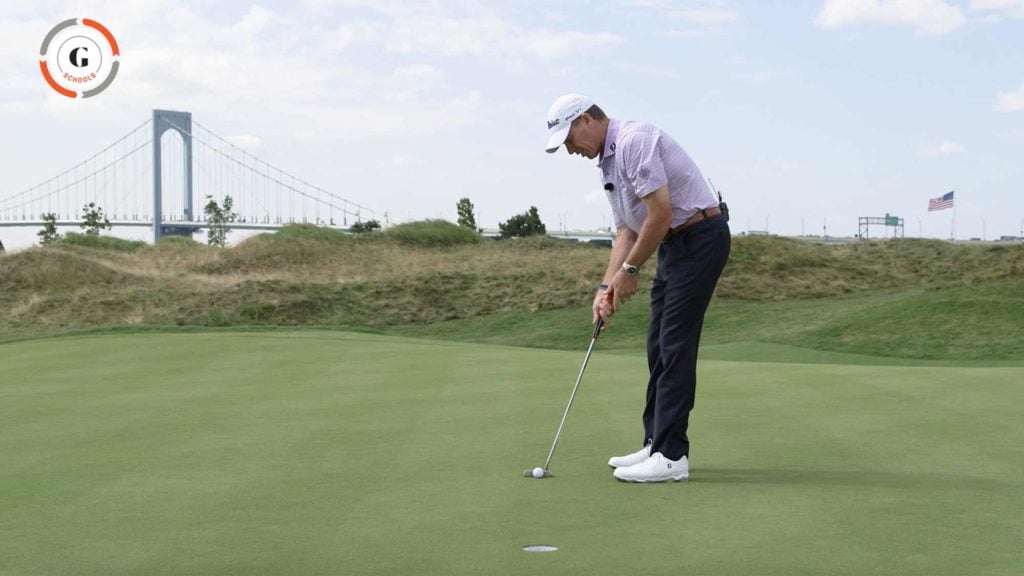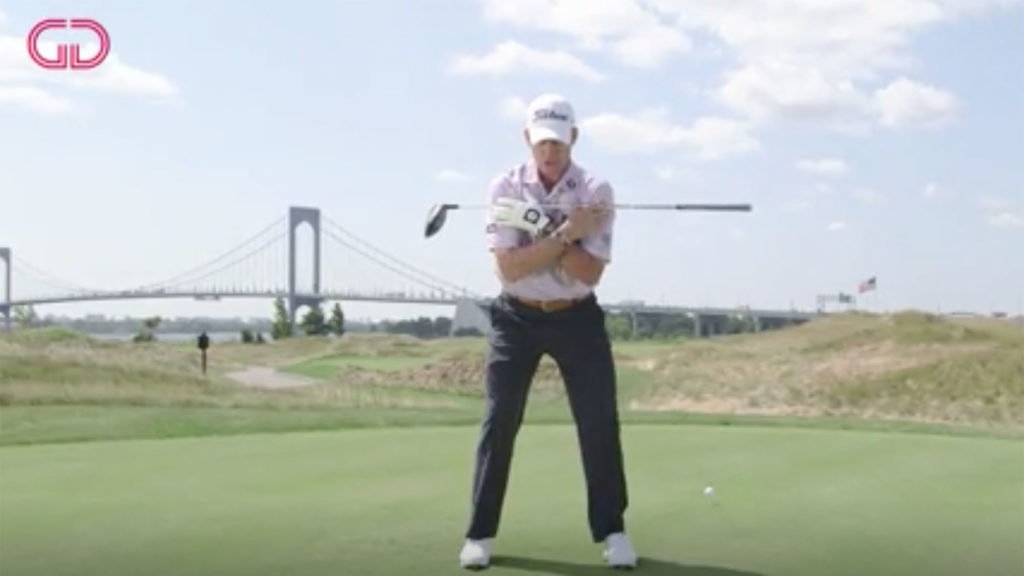One simple move – straightening your trail arm at the right time – can upgrade your entire game, driver to wedges.
I’m a swing junkie. I look for things great players do and try to figure out why they do them. A couple of years ago, I noticed that the longest hitters swing into impact with some bend in the trail arm. The arm is straightening, but it’s not straight. I also found that power players in other hitting sports – tennis, baseball, boxing – don’t fully straighten the trail arm at impact. I began training this move into my swing, and the results were shocking. A year ago, my ball speed with the driver was 147 miles an hour, max. Now, I can get it up to 157! That’s 20 to 30 more yards.
This straightening of the trail arm has a major effect on other parts of the game, particularly iron play and pitching. With irons, it promotes solid contact because it helps you stay in posture through the shot. On pitches, it controls the loft at impact for predictable trajectory and roll.
In short, this one key move can give you the things you probably want the most – more driving
distance, quality contact on iron shots and better control with the wedges.
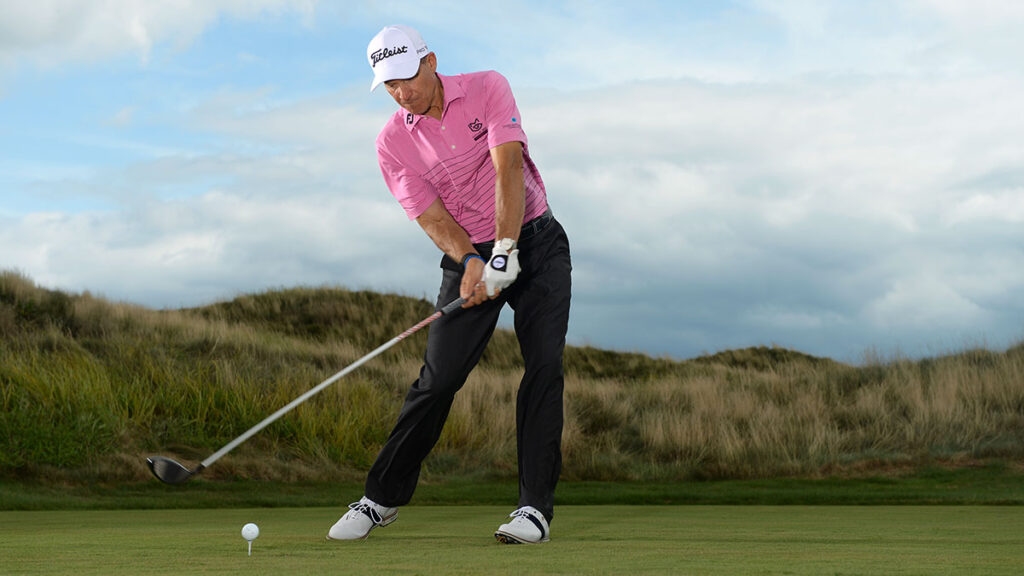
DRIVER
Extend through the impact zone
The major benefit of the trail arm staying bent into impact with the driver is more speed. When the arm is still straightening through the strike, the energy of the swing keeps going down the shaft and into the ball. Once you straighten the arm, energy starts to dissipate and the clubhead slows down. A good feel is that you’re pushing your trail hand away from your trail shoulder through impact [above]. The real bombers almost double that shoulder-to-hand distance from about three or four feet before impact to just after the strike.
To practise this power move, make swings in which you segment the motion, stopping between steps. First, swing your driver to the top. Second, turn your body to its normal impact position. Third, swing the club through by straightening your trail arm.
Work on this three-step motion slowly at first and then start to put the steps together into normal swings. Finally, go back to hitting shots. You’ll quickly get a feel for extending your trail arm out to the target after impact – and see a serious boost in speed.
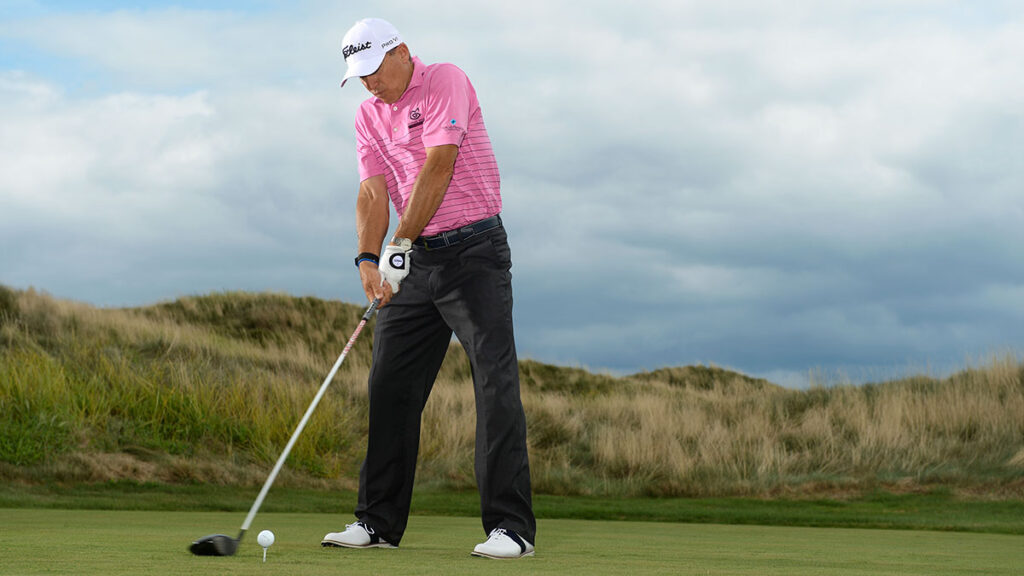
If you don’t do it
When the arm straightens too soon, the butt end of the grip starts to move backwards, away from the target. As a result, the clubhead bottoms out way behind the ball, often causing drop-kicks or thin contact low on the clubface. Also, the body stops turning forward, so the hips and shoulders are facing the ball at impact [above] instead of rotating towards the target. When the body stalls like this, another major power source is cut off. If you feel like you’re swinging fast but not hitting it anywhere, it’s a good bet you’re straightening the trail arm too soon.

Drill: The towel turn
Grab your golf-bag towel, and hold one end in your trail hand at the top-of-backswing position. Wrap the towel behind your trail biceps and pull it against your sternum with your lead hand [above left]. Now, mimic your forward swing, turning your trail shoulder down to its impact position [above right]. The elbow still should be bent 90 degrees, so this is an exaggeration. In a real swing, the arm would be straightening, but still bent! Work on this drill, but intersperse normal driver swings trying to replicate the feel of the trail arm staying bent into the impact zone.
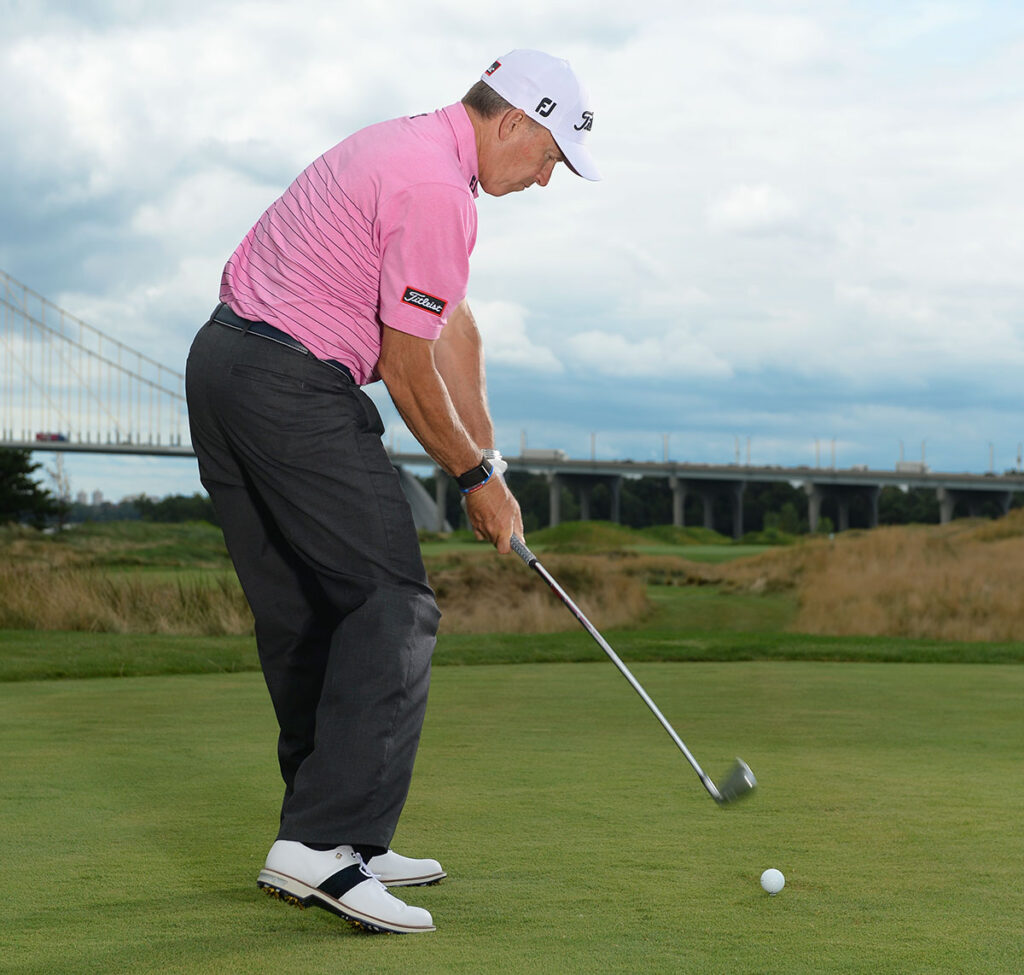
IRONS
Clear our before the strike
When you’re hitting off turf, you really have to control where your swing bottoms out. Maintaining your
posture through impact is a major contributor, and keeping some bend in the trail arm preserves posture. How? Look at it this way: the swing has a certain radius, and the bend in the trail arm largely controls it in the downswing. When the radius lengthens too soon from the arm straightening, the body pulls up to prevent the club from hitting the ground behind the ball. Keeping that arm bent allows you to stay in your posture.
Because an iron strike should be downward, you need to turn your trail shoulder down into impact [above]. But that can make you feel like you’re going to hit the ground too soon. To prevent this, your lead hip has to “clear”, or rotate open. Rotation moves the swing’s low point forward so you can turn down and not crash the club into the ground. For this to work, the trail arm must stay bent. Practise rotating your lower body through aggressively, turning your shoulder down and straightening your trail arm into the follow-through.
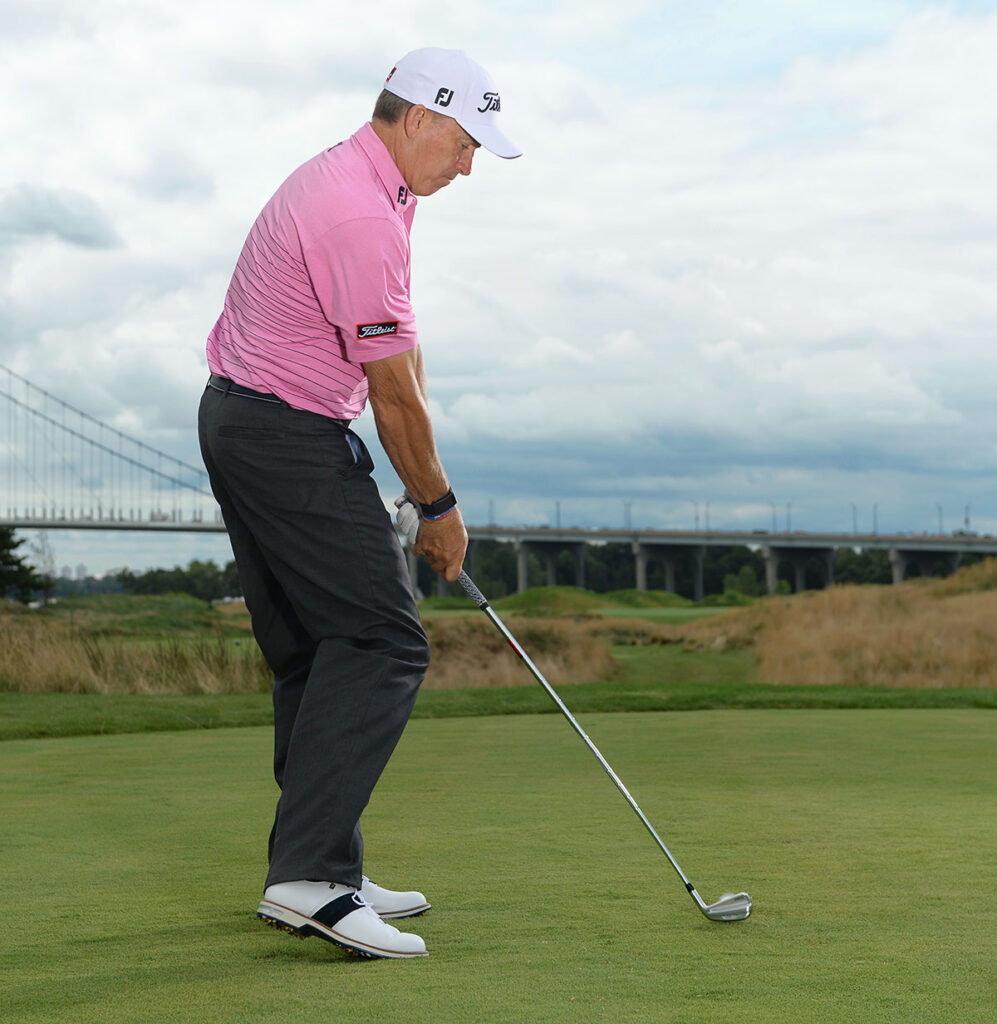
If you don’t do it
We’ve established that straightening the trail arm early causes a loss of posture, but what exactly happens? The hips push towards the ball, and the spine loses its forward tilt [above]. You see, your brain is very good at heading off trouble. When your trail arm straightens too soon, your brain senses that the club, in effect, is getting longer, so it tells your body to stand up to compensate. Obviously, that’s no recipe for consistent contact. You might time it right now and then, but you’re likely to hit a lot of fat and thin iron shots. Sound familiar?

Drill: The Throw
Here’s another great way to train the correct straightening of the trail arm on the downswing. Place a ball six feet in front of you on your target line, hold another ball in your trail hand, and take your setup without a club. Now, swing your trail arm back like you’re making a normal backswing, then start down and throw the ball [above] at the other one on the ground. If you hit it, or come close, it means you kept your trail elbow bent as your arm moved back in front of you. If your arm were to straighten too soon, you’d slam the ball down right in front of you.
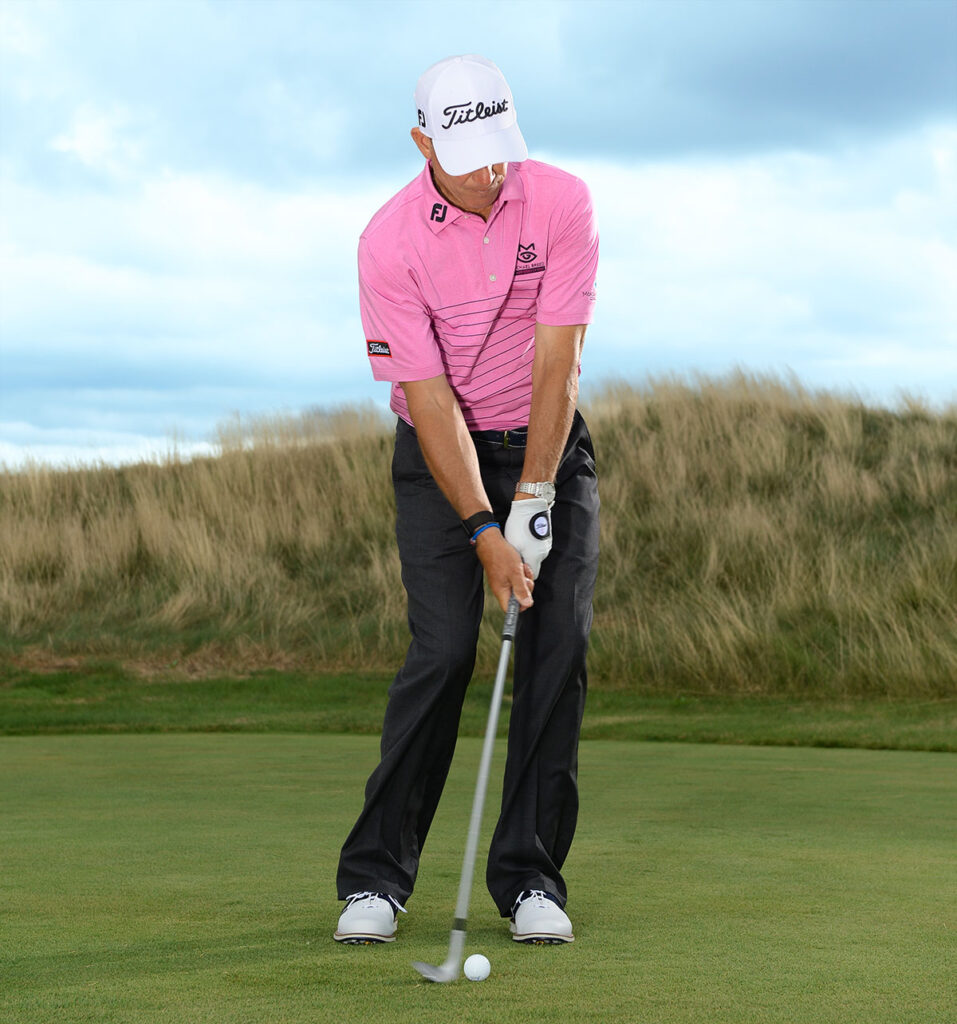
WEDGES
Maintain some hinge into the ball
The pitch swing is smaller and slower than a full-swing iron, but the same concept applies. With pitch shots, the big issue is loft – the loft on the clubface when you strike the ball and the resulting trajectory of the shot. Creating predictable loft is the key: too little loft, and the ball comes out hot; too much, and you don’t reach your target. Again, let the trail elbow bend going back and then straighten through impact [above].
In pitching, the trail wrist also plays a pivotal role because golfers tend to flip the wrist to try to lift the ball into the air. Like the trail elbow, that wrist should still have a little hinge at impact.
One wrinkle in pitching: you have to control what the ball does in the air and on the ground, and the trail arm helps with both. It lets you deliver predictable clubface loft and make a solid strike, which imparts consistent spin on the ball so it rolls out as you expect. Hit some pitches where you straighten your trail arm before impact, then hit some where you let it straighten after the strike. You’ll become a believer real fast!
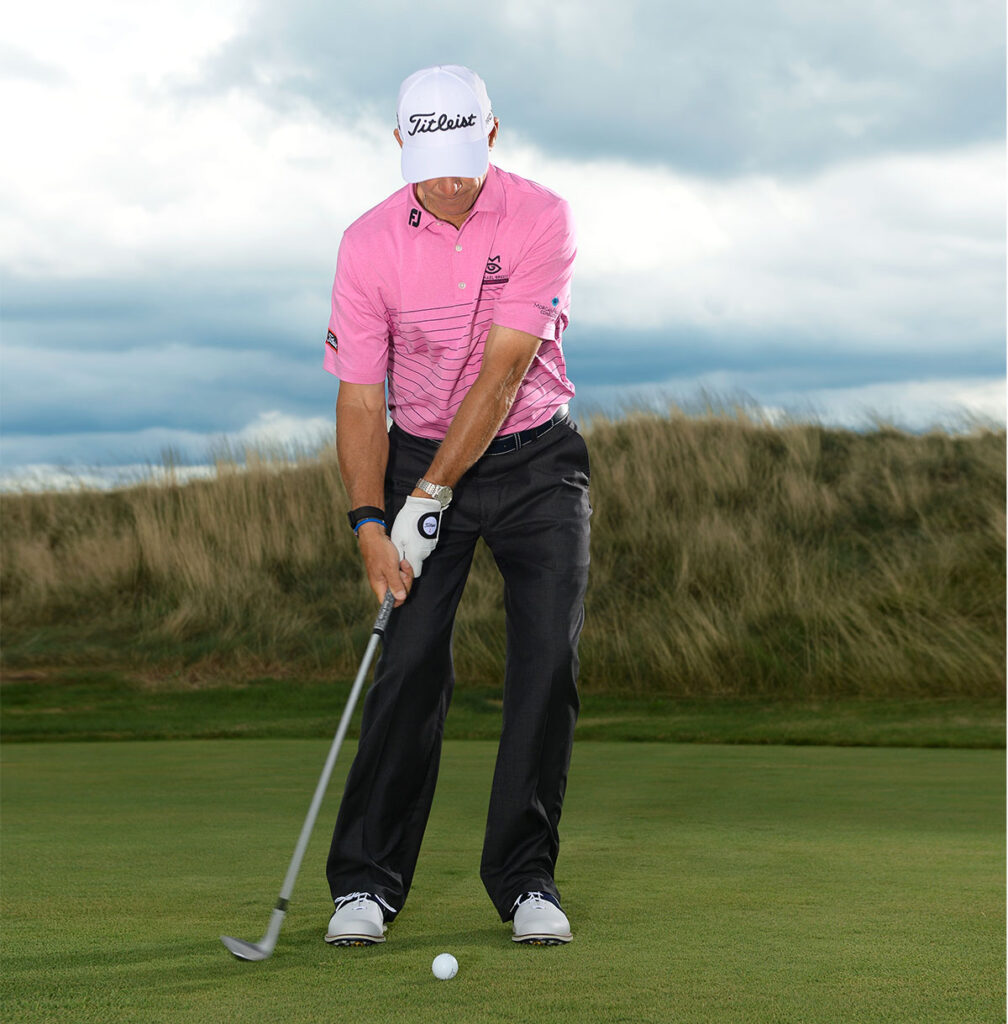
If you don’t do it
The lifting action that plagues poor pitchers has a distinct look if you freeze the swing right before the club reaches the ball [right]. The hands are back – the trail hand under the trail shoulder and its palm turning upwards. From this position, the clubhead bottoms out behind the ball, typically producing chunks or skulls. If you manage to get lucky and catch one solid, you still hit a weak shot because you’ve added loft to the clubface that you didn’t expect. Compare this to the correct image on the previous page [above]. The hands are centred on the body, the trail arm is pointing in front of the ball, and the chest is turning towards the target. That’s how you hit solid pitch shots with predictable loft.
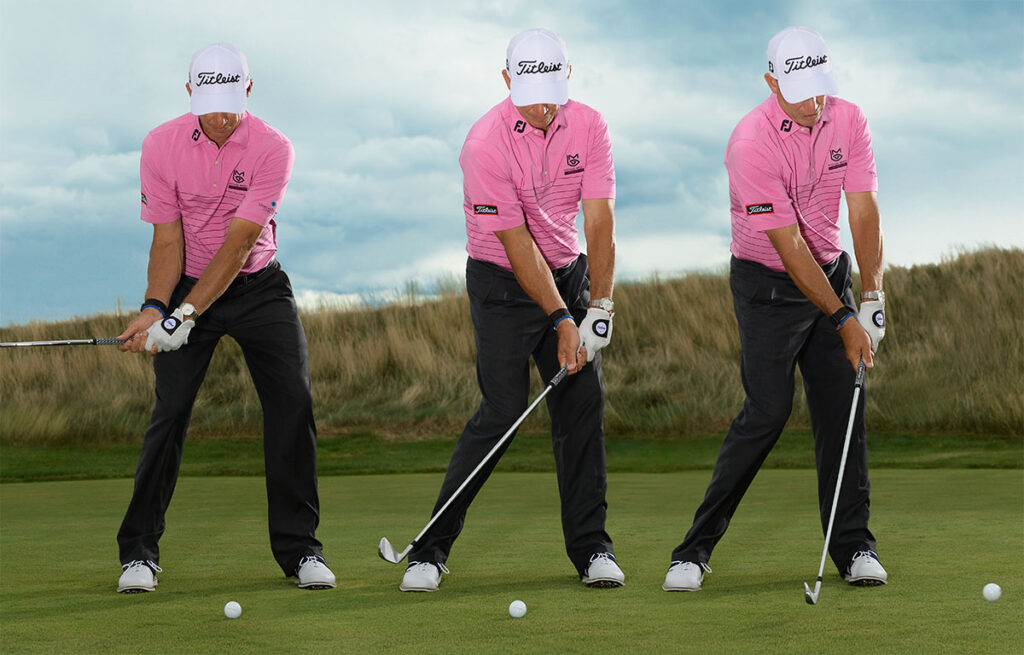
Drill: The impact tap
The other drills got your body turning to impact (The Towel Turn) and your trail arm straightening correctly (The Throw). Now let’s get a club in your hands. Swing a 6-iron but stop halfway down, keeping the bend in your trail elbow and wrist [above left]. Then, turn your body forward until your hands are in front of the ball and stop [above middle]. Finally, tap the club into the ball, hitting it 10 yards or so [above right]. This teaches you to not lift or add loft to the face; just turn forward and straighten your arm to hit the ball. Ingrain those moves (pitching first, then full swing) to learn what great impact feels like.
Photographs by J.D. Cuban




